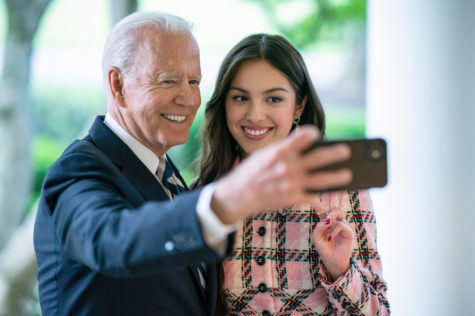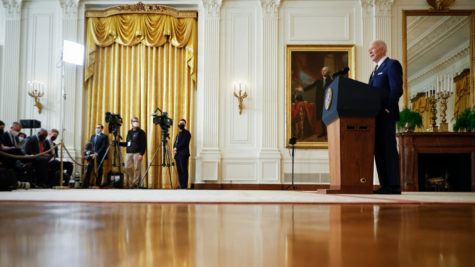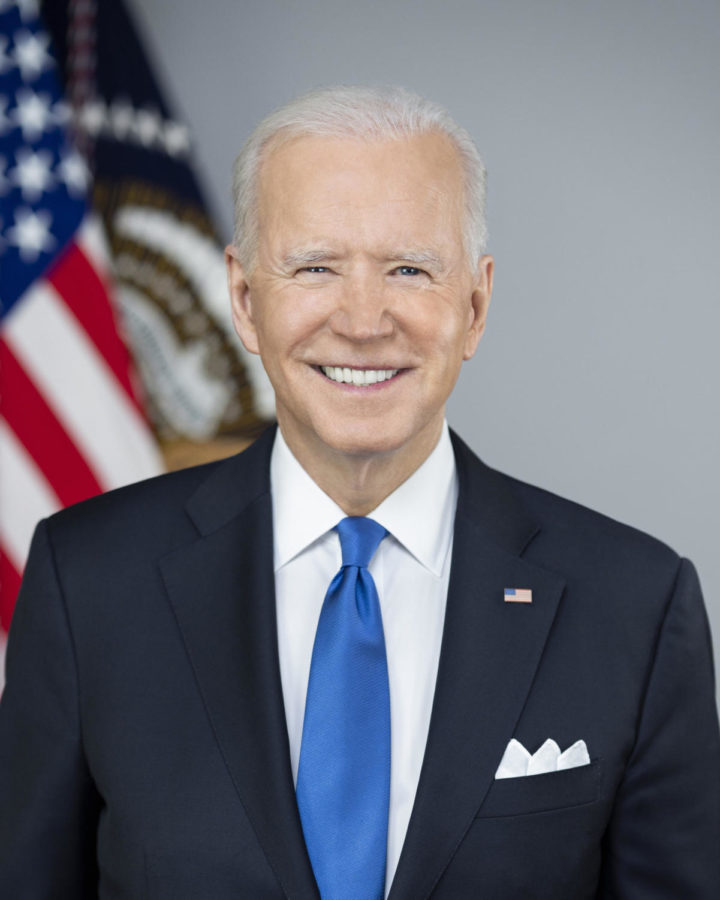A Comprehensive Review of Biden’s First Year in Office
The presidential portrait of president Biden. This image was captured by Chief official White House photographer Adam Schultz
January 20, 2022
January 20 marks exactly one year since the inauguration of Joseph R. Biden as the President of the United States. An entire 365 days have passed since President Biden started tackling the hardest job in the nation. No one can deny that Biden has been put to the test with a presidency predisposed to several unforeseen challenges.
“Everyone can agree that it’s a tough job,” stated Alexandra Herrada (11). An AP United States history student, Herrada can view his administration through a lens of historical comparability. She elaborated upon her sentiments, stating that “whoever steps up to the plate must be equipped with the necessary tools to govern the United States of America.” On that note, most Americans can agree that Biden’s first year in office has been challenging. Here’s a list of some highlights and low points of Biden’s administration thus far.
January
President Biden’s first month in office was, in a word, eventful. Biden had what many call “the busiest first week a U.S. president has had” (CNN). Biden’s campaign platform ran on a series of ideals, and in his first week, he set out to fulfill them. Biden signed over 60 executive orders in that first week, 24 of which were a direct reversal of initiatives by President Trump’s Administration.
Just on his first day in office, he fortified DACA, a pro-immigration initiative that President Obama introduced that protects children who illegally reside in the United States, and he halted the construction of President Trump’s signature border wall. In another executive order on January 20, Biden announced that the United States would be rejoining the Paris Climate Accord, a global agreement that aims to “ substantially reduce global greenhouse gas emissions to limit the global temperature increase in this century” (Natural Resources Defense Council, Inc).
March

In March, Biden was forced to face some major problems, and by major problems, I mean problems with Major, Biden’s darling but dangerous rescue German Shepherd. In an upsetting series of events, Major engaged in a vicious attack with a security guard on March 8 that “resulted in a minor injury to the individual” (NY Post). Major appeared to be unaffected, however, as he attacked another individual on March 30. While Biden reportedly took Major on a walk, Major bit a National Park Service employee, and the employee was soon sent to the White House Medical Unit.
In more serious news, Biden introduced his American Rescue Act of 2021, which the official White House statement described as “President Biden’s plan to provide direct relief to Americans, contain covid-19, and rescue the economy” (whitehouse.gov). This initiative sent financial aid to individuals making less than $80,000 a year and provided free health insurance to those who are financially unable to pay for it.
May
Up until May of 2021, Biden’s presidency had remained fairly free of mass criticism. His withdrawal of American troops from Afghanistan, however, changed his reputation. Although the Biden Administration had forewarned about the removal of US troops in the Middle East several months earlier, the entire affair was rushed and poorly planned. This lack of organization led to the death of many American soldiers and Afghan citizens, whose lives were mourned throughout the world.
June
June of 2021 marked a historic day in the name of executive orders. It had been almost 40 years since President Reagan signed a bill that instituted Martin Luther King Jr. day. Since 1983, there have been no federal holidays passed until June 21, 2021, when President Biden passed a bill for a federal holiday on June 19 called “Juneteenth.” This holiday marks the day that President Lincoln issued the Emancipation Proclamation, a document that freed the enslaved people of the Confederacy Although this federal holiday lacks historical accuracy, it is an important reminder of American ideals of equality, and it was passed during what some call “the second civil rights movement of America” (PBS).
July

(Instagram)
President Biden was trending on multiple social media platforms in July of 2021, and all he had to do was smile. The international pop icon, Olivia Rodrigo, expressed her strong support of President Biden during the election of 2020, despite her inability to vote. In July of 20021, after half a year in office, Biden arranged to meet Olivia Rodrigo, and the pair took a series of photos that went viral.
October
In October, Biden proposed yet another federal holiday, Indigenous People’s Day. While his proposition did not reach federal recognition, it has gone into effect in several states. Indigenous People’s Day is a holiday that celebrates the accomplishments of Native Americans. Many consider it to be a counter-holiday to a previous national holiday, Christopher Columbus Day, as the former occurs on the same day as the latter.
In perhaps bigger news, November marked the introduction of President Biden’s Build Back Better plan. According to the White House official statement, the Build Back Better plan was to be a stimulus package that would “create millions of good-paying jobs, enable more Americans to join and remain in the labor force, and grow our economy from the bottom up and the middle out” (whitehouse.gov). When proposed, this bill was attached with a $2 trillion price tag.
November
On November 20th, President Biden celebrated his 79th birthday. While Biden is already the oldest president in office, 79 is a landmark age for a United States President. Before Biden’s election, President Trump held the record for oldest United States president in office at 75-years-old. Biden’s age has been a constant point of conflict during his presidency, as many political adversaries have questioned his mental fitness.
December
December marked a historic decision in the United States Congress, as the congressional voting for Biden’s Build Back Better plan began. While the majority of Senate Republicans voted against the bill, the Democrats held a majority, and it was predicted to be passed. Much to the surprise of President Biden, Senator Joe Manchin, a Democrat from West Virginia, voted against the bill and his party, and it has yet to be passed.
January
Now that we have made it around to January, a full year of Biden’s Administration has passed, and public opinions of President Biden are ever-changing. If you ask every American, you’ll get millions of different accounts of his first year. Republicans and Democrats can agree that this past year has been anything but usual, and Biden’s leadership skills have surely been put to the test. Best of luck to the Biden Administration in the coming three years.






















